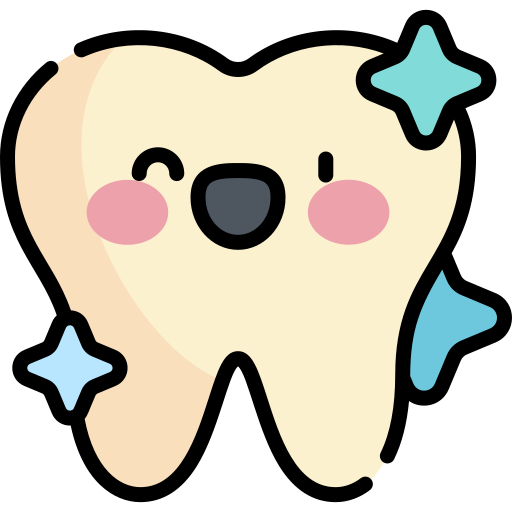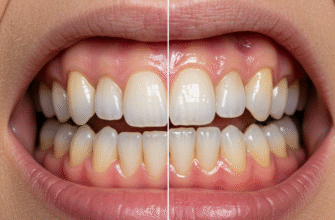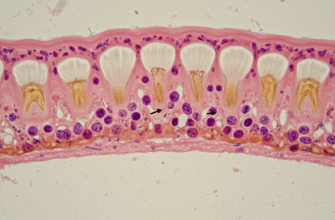Ever walked out of a dental appointment with a new crown, a bridge, or even an orthodontic bracket, marveling at how securely it’s fixed in place? You might casually think, “Ah, some dental glue did the trick.” But that “glue” is a world away from your household superglue or craft paste. The realm of dental cements is surprisingly vast and sophisticated, a far cry from a one-size-fits-all solution. Believing all dental cements are the same material is like thinking all paints are identical – sure, they all add color, but their composition, durability, and ideal uses couldn’t be more different. This common misconception overlooks the incredible science and tailored engineering that goes into each type of dental cement.
So, what exactly are these dental cements? In broad strokes, they are materials used to attach dental restorations or appliances to tooth structure or to each other. Their job description is pretty demanding. They need to be strong enough to withstand the forces of chewing, insoluble in oral fluids (nobody wants their crown washing away with their morning coffee!), non-irritating to the tooth and gums, and, in many cases, aesthetically pleasing. Some are used for permanent luting of crowns and bridges, others for temporary restorations, some act as protective liners under fillings, and some even help prevent further decay. It’s a multifaceted role, and no single material can ace every part of it.
Why the Misconception Exists
It’s understandable why many might assume all dental cements are cut from the same cloth. Often, they appear as a paste or a powder mixed with a liquid, and their ultimate function – sticking things together – seems straightforward. The term “cement” itself sounds rather generic, evoking images of construction rather than intricate dental work. However, just as a builder wouldn’t use the same concrete for a garden path as for a skyscraper foundation, a dentist needs a specific type of cement for a specific job inside the unique environment of your mouth. The differences lie deep within their chemical makeup, setting reactions, and resulting physical properties.
A Tour Through the Cement Aisle: Not All Pastes Are Created Equal
Let’s peel back the curtain and explore some of the distinct categories of dental cements. This journey will reveal just how diverse these materials truly are, each with its own personality and skill set. Prepare to be surprised by the chemistry at play every time your dentist reaches for that mixing pad.
The Stalwart Classic: Zinc Phosphate Cements
Think of Zinc Phosphate as the seasoned veteran of the cement world. It’s one of the oldest luting agents still in use, and for good reason. It boasts a long clinical track record, high compressive strength (meaning it’s tough under pressure), and a relatively low film thickness, which allows for precise seating of restorations. However, it’s not without its quirks. Zinc Phosphate cement is quite acidic when first mixed, which can sometimes irritate the tooth’s pulp (the living tissue inside). It also relies purely on mechanical interlocking for retention; it doesn’t chemically bond to the tooth or the restoration. Its opacity also means it’s not the top pick for highly aesthetic, translucent restorations.
The Kind Adherer: Polycarboxylate Cements
Emerging as a step forward, Polycarboxylate cements were the first to offer a true chemical bond to tooth structure, specifically to the calcium in enamel and dentin. This was a significant leap! They are also known for being relatively kind to the dental pulp due to their larger polyacrylic acid molecules, which don’t penetrate the dentinal tubules as readily. While their adhesion was a plus, their strength and wear resistance aren’t quite on par with zinc phosphate, and they can be a bit tricky to handle, with a short working time and a tendency to be quite viscous.
The Fluoride Friend: Glass Ionomer Cements (GICs)
Glass Ionomer Cements, or GICs, were a game-changer in many respects. Like polycarboxylates, they chemically bond to tooth structure. But their standout feature is their ability to release fluoride ions over time. This fluoride can be taken up by adjacent tooth enamel and dentin, helping to make the tooth more resistant to decay – a fantastic bonus, especially for patients at higher risk of cavities. GICs are also quite biocompatible. On the downside, early GICs were somewhat moisture-sensitive during setting, could be brittle, and didn’t offer the same high strength or aesthetic qualities as some other options for demanding situations like full ceramic crowns on molars.
It’s crucial to understand that the selection of a dental cement is a complex decision made by your dental professional. They consider the type of restoration, the tooth’s condition, the forces it will endure, and aesthetic requirements. The wide array of cements available allows for a tailored approach to ensure the best possible outcome for each unique clinical situation. This diversity is a strength, not a sign of indecision in the field.
The Hybrid Hero: Resin-Modified Glass Ionomer (RMGI) Cements
What if you could combine some of the best features of GICs with the advantages of another class of materials? Enter Resin-Modified Glass Ionomer (RMGI) cements. These clever hybrids incorporate resin components into the GIC formulation. The result? You still get the desirable chemical adhesion and fluoride release of traditional GICs, but with improved strength, lower solubility (they don’t wash out as easily), better aesthetics, and a more user-friendly setting reaction, often involving light-curing capabilities. RMGIs have become incredibly popular for cementing many types of crowns and bridges, offering a great balance of properties. They are generally easier to use than pure resin cements, especially when it comes to cleanup.
The Aesthetic Powerhouse: Resin Cements
When it comes to sheer strength, durability, and aesthetics, resin cements often take the crown (pun intended!). These are sophisticated polymer-based materials that bond micromechanically to both etched tooth structure and specially prepared restorative surfaces. They are the go-to choice for bonding all-ceramic restorations like veneers, inlays, onlays, and crowns where aesthetics are paramount and high bond strength is critical. Resin cements come in various shades to match teeth perfectly and are available in different curing mechanisms:
- Light-cured: Harden when exposed to a specific wavelength of dental curing light. Ideal for thin, translucent restorations like veneers.
- Self-cured (or chemical-cured): Set via a chemical reaction once two components are mixed. Useful for metallic or opaque restorations where light can’t penetrate.
- Dual-cured: Combine both light-curing and self-curing mechanisms, offering versatility. They begin to set with light and continue to cure chemically in areas the light might not fully reach.
While incredibly effective, resin cements are often the most technique-sensitive. They require meticulous isolation to keep the working area perfectly dry, and the bonding procedures can be more complex and time-consuming than with other cement types. However, for many modern restorative procedures, their superior performance and aesthetic capabilities make them indispensable.
Choosing the Right Tool for the Job
As you can see, the idea that all dental cements are the same is far from the truth. Each category, and indeed many products within those categories, possesses a unique profile of strengths, weaknesses, handling characteristics, and ideal applications. A dentist wouldn’t use a delicate, aesthetic resin cement for a situation where robust, fluoride-releasing GIC would be more beneficial, nor would they typically opt for an opaque zinc phosphate cement under a highly translucent porcelain veneer.
The development of dental cements is an ongoing story of innovation, driven by the desire for materials that are stronger, more durable, more biocompatible, easier to use, and more aesthetic. So, the next time you’re at the dentist, remember that the “glue” being used is likely a highly specialized material, chosen with care to give your dental work the best chance of success and longevity. The world of dental cements is diverse, dynamic, and a testament to the remarkable progress in dental materials science. The myth of sameness is well and truly debunked!








